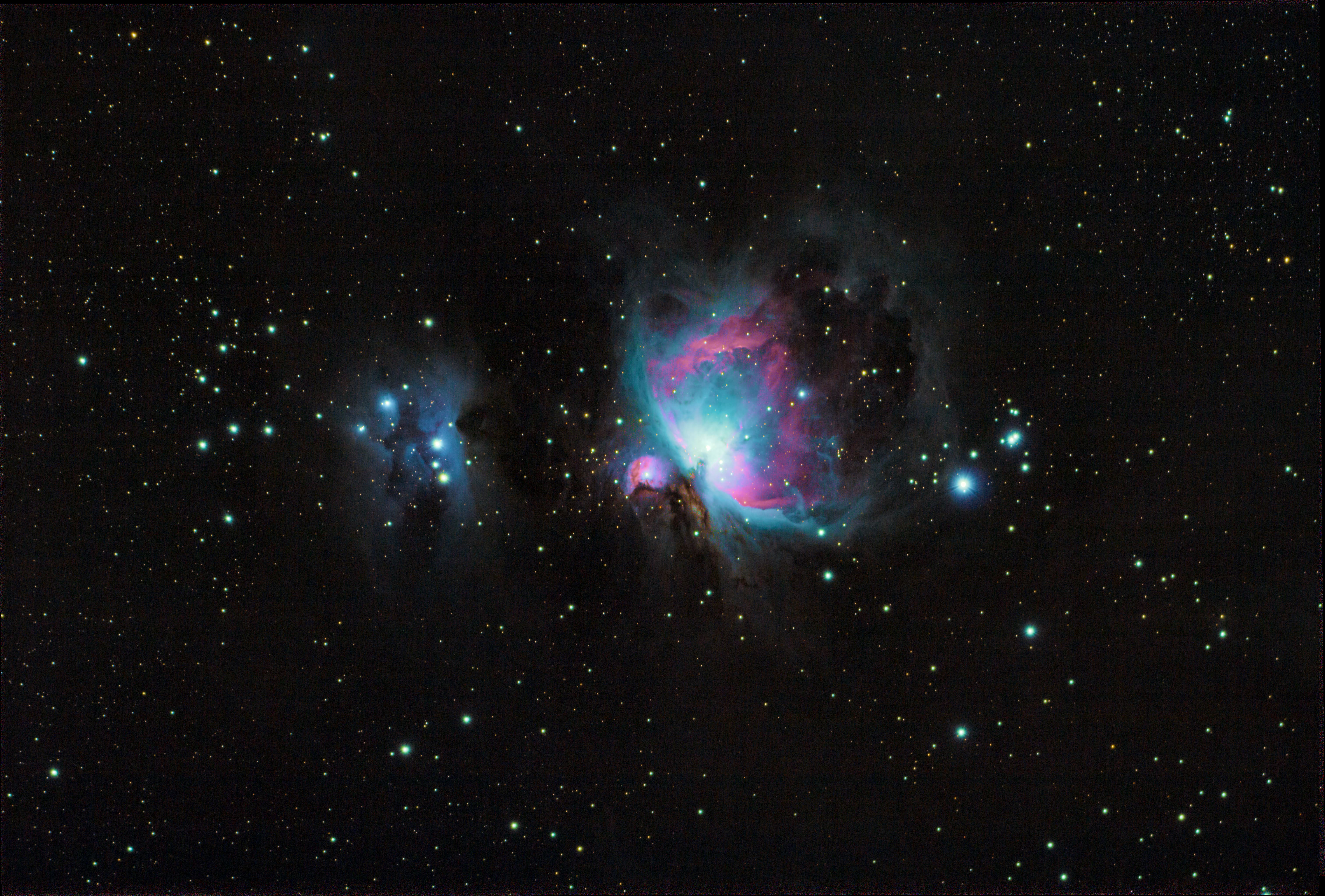
The Great Nebula in Orion and Running Man Nebula
The Orion Nebula is one of the most famous and highly studied celestial objects in human history. It is a diffuse nebula in the Milky Way located at roughly 1300 light years from Earth. The Orion Nebula is often referred to as a stellar nursery, being the birthplace of thousands of stars. The Orion Nebula lies midway down the Sword of Orion, and has a smaller reflection nebula (Sh2-279) as its neighbor, popularly known as The Running Man Nebula.
Orion has captivated the human imagination for centuries - from the ancient Mayans and Greeks, to the modern humans today. Scientists have studied Orion and observed protoplanetary disks, brown dwarfs, intense and turbulent motions of the gas, and the photo-ionizing effects of massive nearby stars in the nebula.
Shot from Mt. Pinos, California
October 25th, 2020
Telescope - Explore Scientific ED80
Mount - Skywatcher HEQ5 Pro
Camera - Canon Rebel T6i
Aperture - f/6
Shutter - 30 seconds
ISO - 400
59 light frames | 11 dark frames | 64 bias frames
29.5 minutes total integration time
Images calibrated and stacked in AstroPixelProcessor
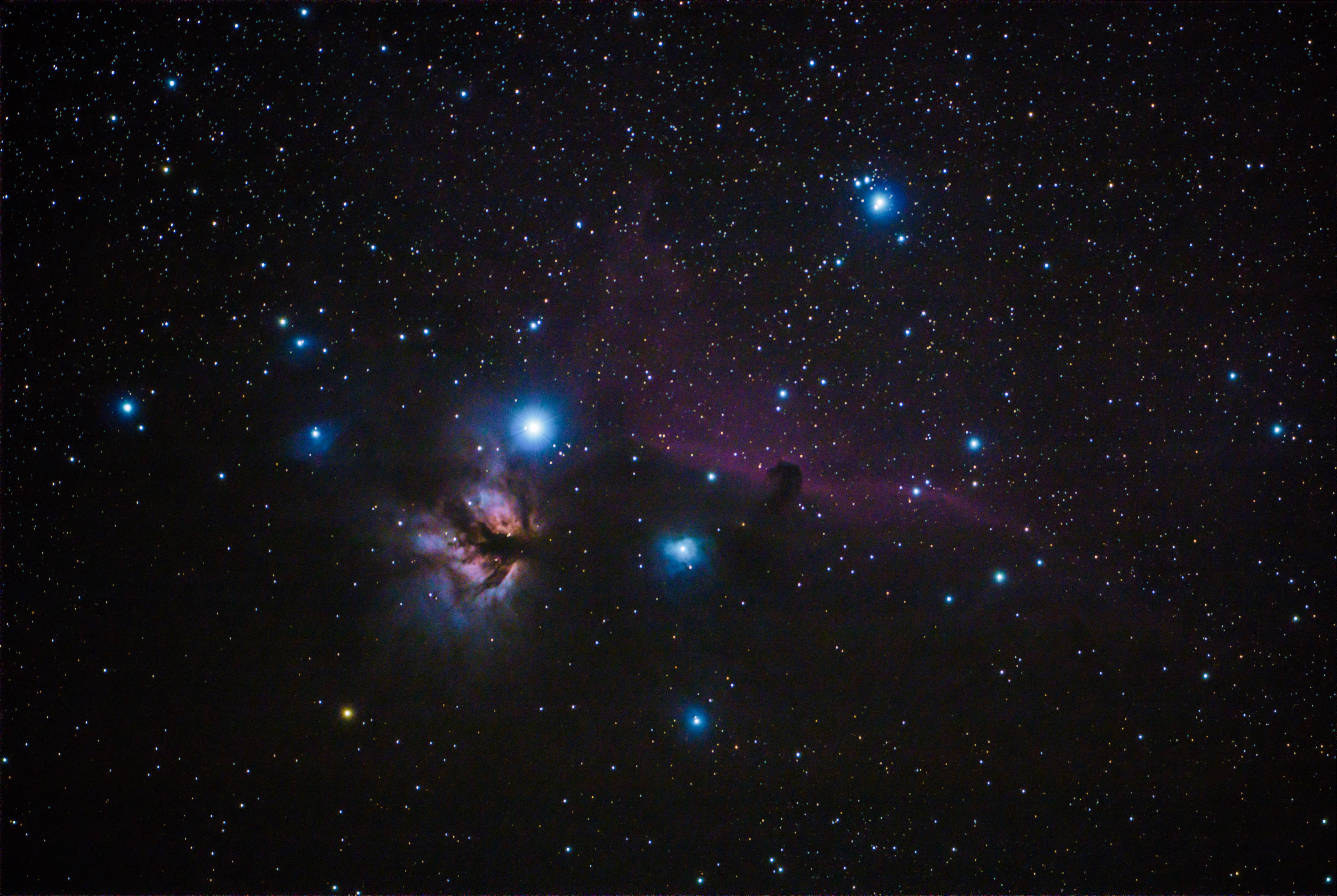
Flame Nebula and Horsehead Nebula
Located on either side of Alnitak, the easternmost star in the Belt of Orion are two very interesting cosmic objects - the emission nebula NGC2024 popularly known as The Flame Nebula on the left and a small, dark nebula known as Barnard33 or the famed Horsehead Nebula on the right.
The Flame Nebula glows from the recombination of electrons knocked free from the great clouds of hydrogen gas and ionized hydrogen. The electrons are freed by the bright and energetic ultraviolet light coming from Alnitak. The darker tendrils are areas of dark gas and dust located in front of the Flame, obscuring some of the brighter areas.
The Horsehead meanwhile, is a dark and easily identifiable nebulous region located in front of a large cloud of ionized hydrogen gas that glows deep red.
Shot from Mt. Pinos, California
October 25th, 2020
NGC2024/Barnard33 - The Flame Nebula and Horsehead Nebula
Telescope - Explore Scientific ED80
Mount - Skywatcher HEQ5 Pro
Camera - Canon Rebel T6i
Aperture - f/6
Shutter - 30 seconds
ISO - 400
36 light frames | 11 dark frames | 52 bias frames
18 minutes total integration time
Images calibrated and stacked in AstroPixelProcessor
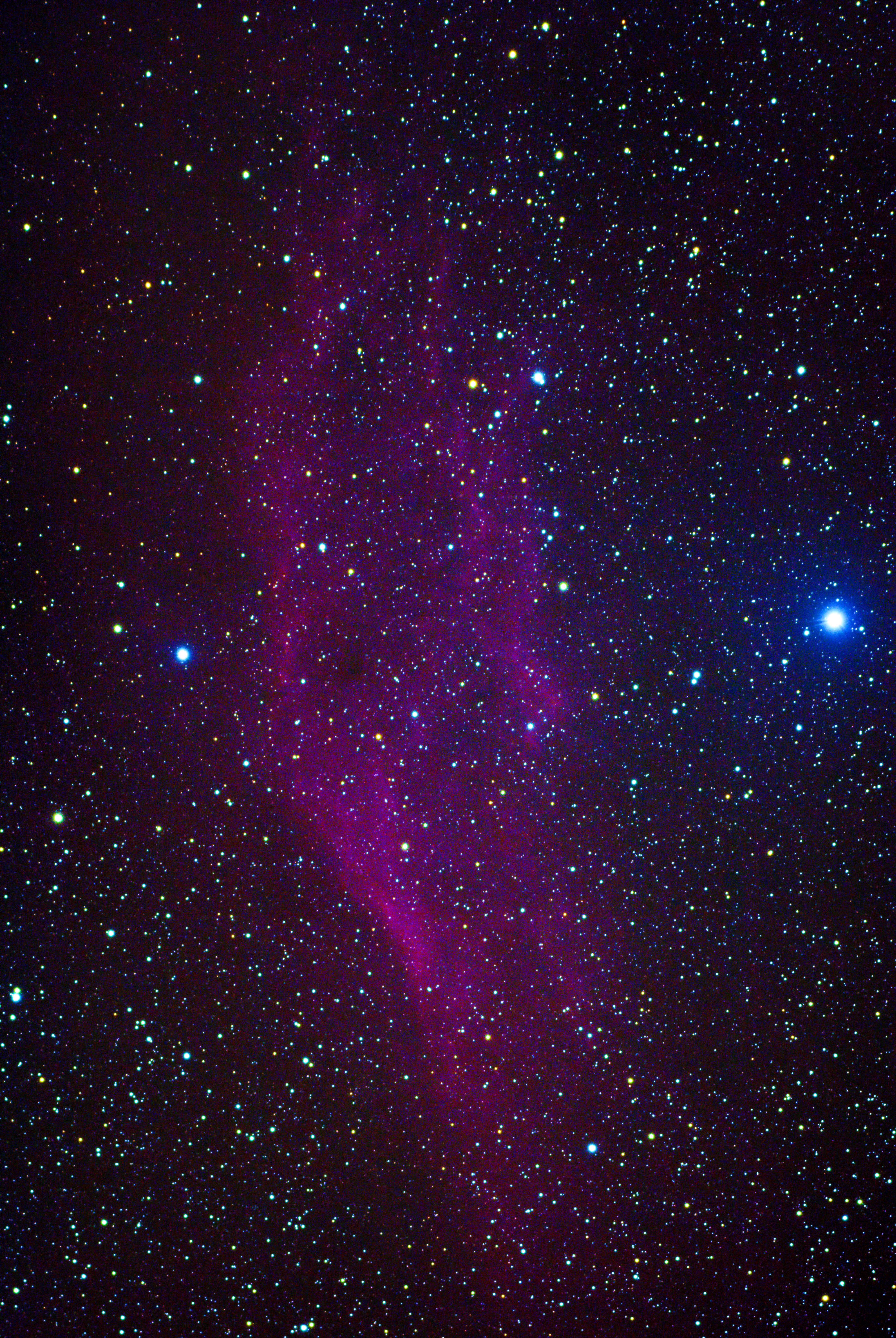
California Nebula
The California Nebula is a large emission nebula located in the constellation Perseus. It is approximately 100 light years long and located at a distance of 1000 light years from Earth. It shines with a reddish glow typical of hydrogen atoms being ionized by energetic radiation from the bright, blue star to the right of the nebula - Xi Persei, also known as Menkib.
The California Nebula is a much dimmer object than anything I have imaged before and it was more challenging to find and expose properly. I used longer exposures than I have ever used before to capture its faint nebulosity.
Shot from Mahogany Flat Campground, Death Valley, California November 13th, 2020
California Nebula - NGC 1499
Telescope - Explore Scientific ED80
Mount - Skywatcher HEQ5 Pro
Camera - Canon Rebel T6i
Aperture - f/6
Shutter - 45 seconds
ISO - 3200
47 light frames | 160 bias frames
35.25 minutes total integration time
Images calibrated and stacked in AstroPixelProcessor
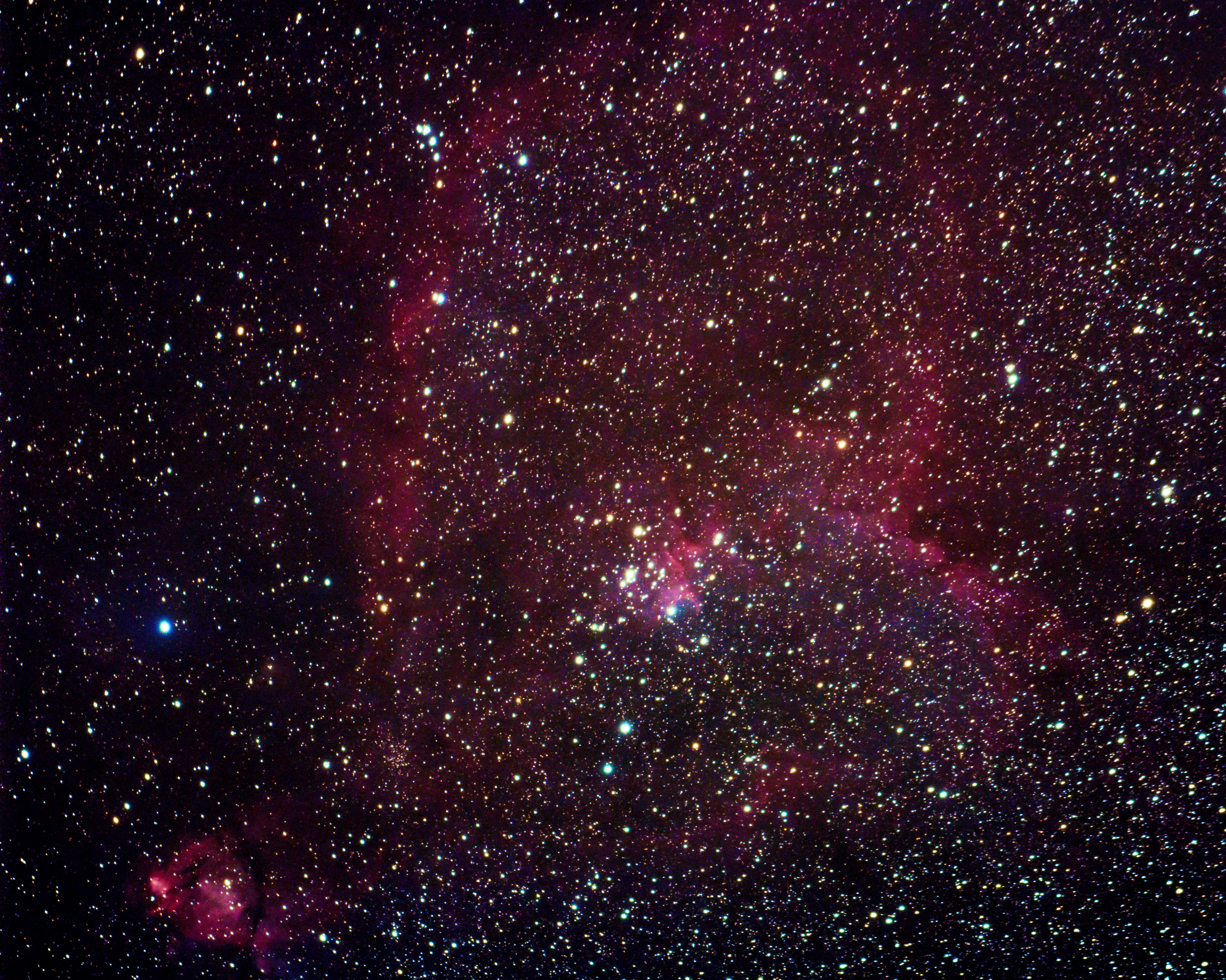
Heart Nebula
The Heart Nebula lies some 7500 light years away from Earth in the Perseus Arm of the galaxy in the constellation Cassiopeia. It is an emission nebula glowing with ionized hydrogen gas. Its red glow and larger shape are all powered by a small group of stars at the nebula's center.
At the bottom left of the frame is the Fishhead Nebula, the companion nebula of the Heart.
Shot from Stovepipe Wells Campground, Death Valley, California November 14th, 2020
Heart Nebula - IC 1805
Telescope - Explore Scientific ED80
Mount - Skywatcher HEQ5 Pro
Camera - Canon Rebel T6i
Aperture - f/6
Shutter - 50 seconds
ISO - 6400
44 light frames | 40 dark frames | 143 bias frames
36.66 minutes total integration time
Images calibrated and stacked in AstroPixelProcessor
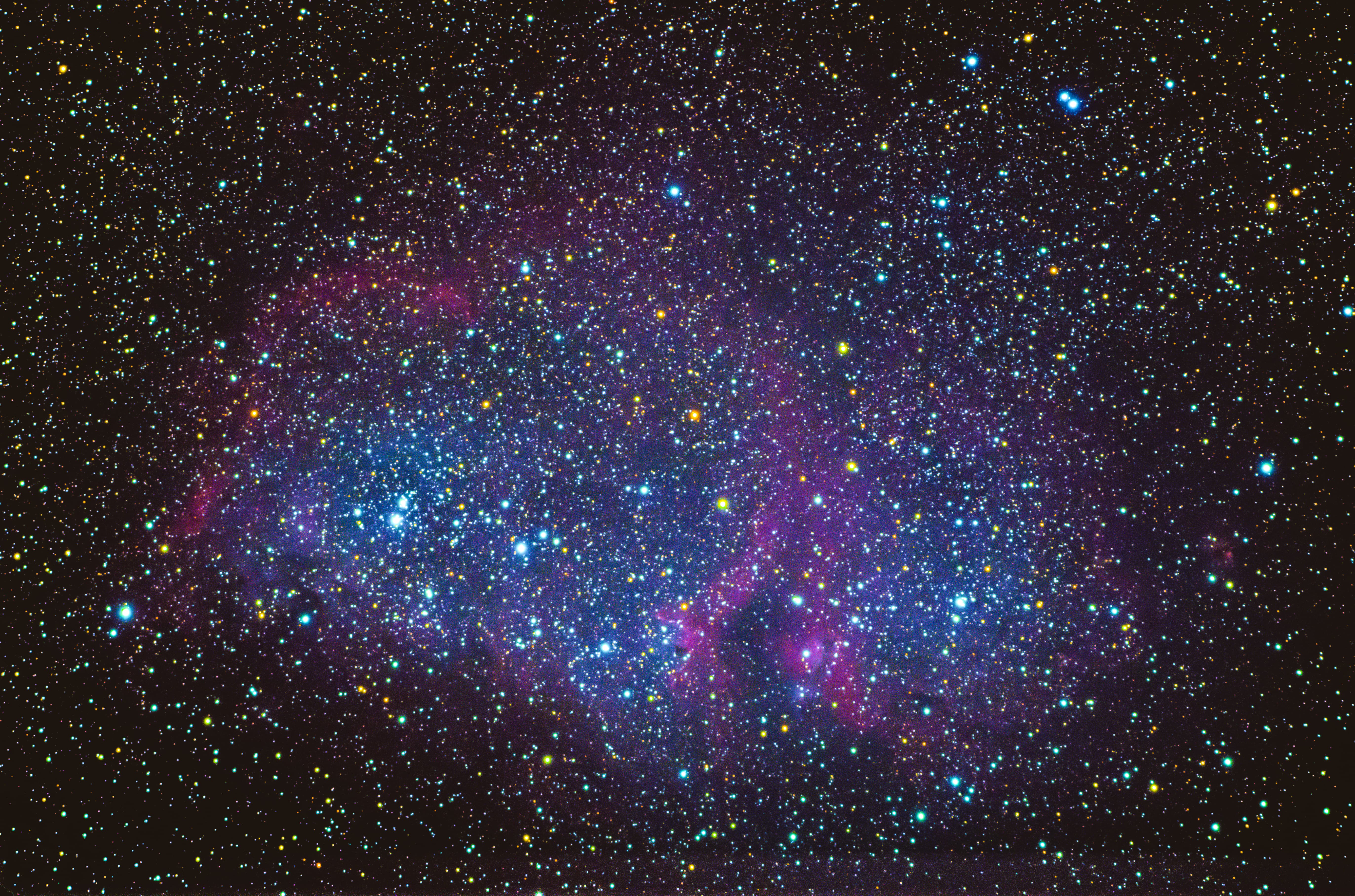
Soul Nebula
The Soul Nebula is an emission nebula located in the constellation Cassiopeia. It has several small star clusters embedded within the main area of nebulosity. The area also is home to W5, a radio source within the nebula, which spans an area of sky equivalent to four full moons and is about 6,500 light-years away in the constellation Cassiopeia.
Like other massive star-forming regions - such as Orion - W5 contains large cavities that were carved out by radiation and winds from the region's most massive stars. According to the theory of triggered star formation, the carving out of these cavities pushes gas together, causing it to ignite into successive generations of new stars.
Shot from Templin Highway, California January 9th, 2021
Soul Nebula - IC 1848
Telescope - Explore Scientific ED80
Mount - Skywatcher HEQ5 Pro
Camera - Canon Rebel T6i
Aperture - f/6
Shutter - 45 seconds I
ISO - 6400
103 light frames
36 dark frames
217 bias frames
77.25 minutes total integration time
Images calibrated and stacked in AstroPixelProcessor
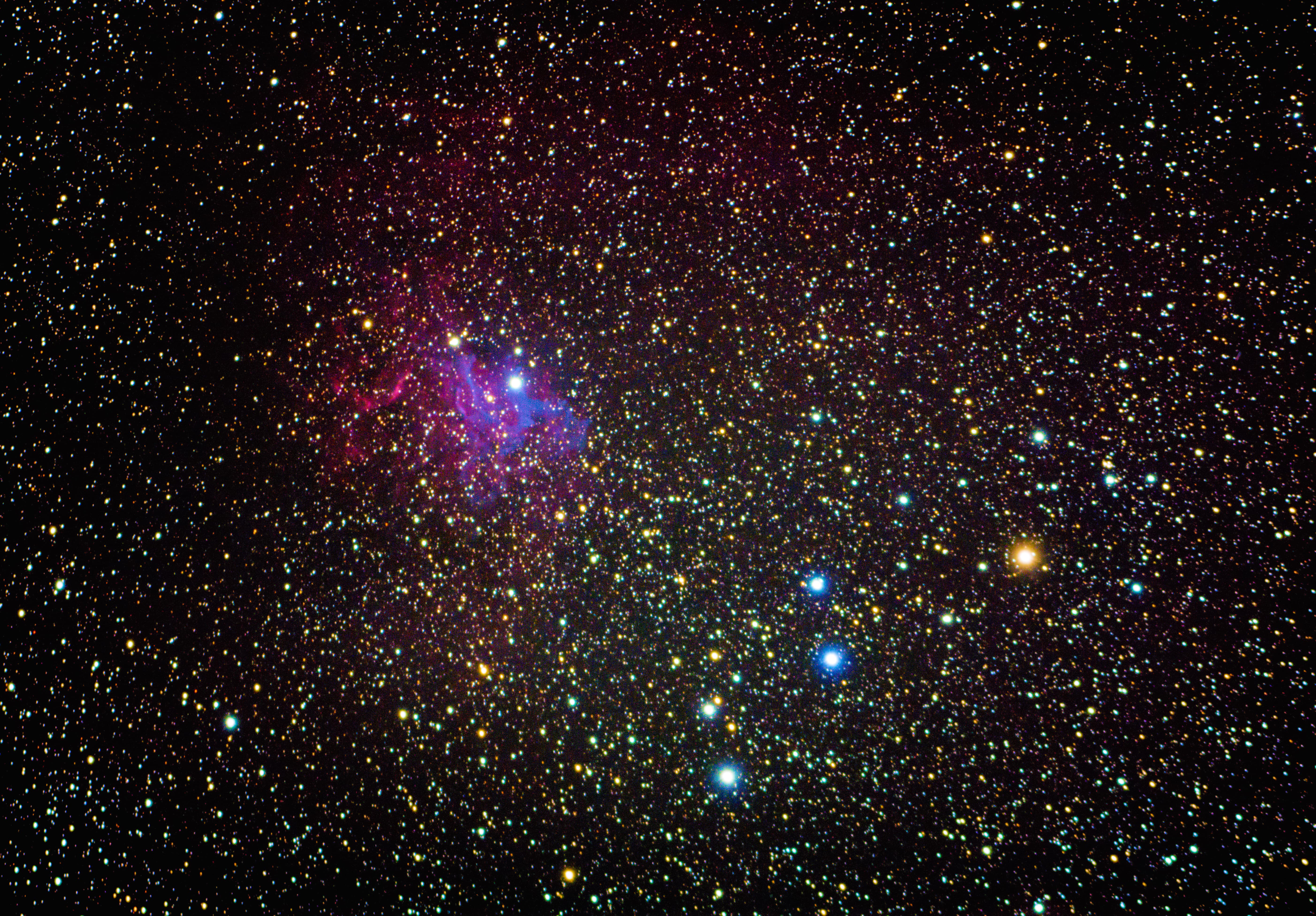
The Flaming Star Nebula
The Flaming Star Nebula is an emission and reflection nebula in the constellation Auriga, surrounding the bluish star AE Aurigae. The nebula lies about 1,500 light-years away from Earth and is about 5 light-years across. It is believed that the proper motion of the central star can be traced back to the Orion's Belt area.
Shot from Templin Highway,California December 19th, 2020
The Flaming Star Nebula - IC 405
Telescope - Explore Scientific ED80
Mount - Skywatcher HEQ5 Pro
Camera - Canon Rebel T6i
Aperture - f/6
Shutter - 60 seconds
ISO - 3200
49 light frames | 29 dark frames |78 bias frames
49 minutes total integration time
Images calibrated and stacked in AstroPixelProcessor
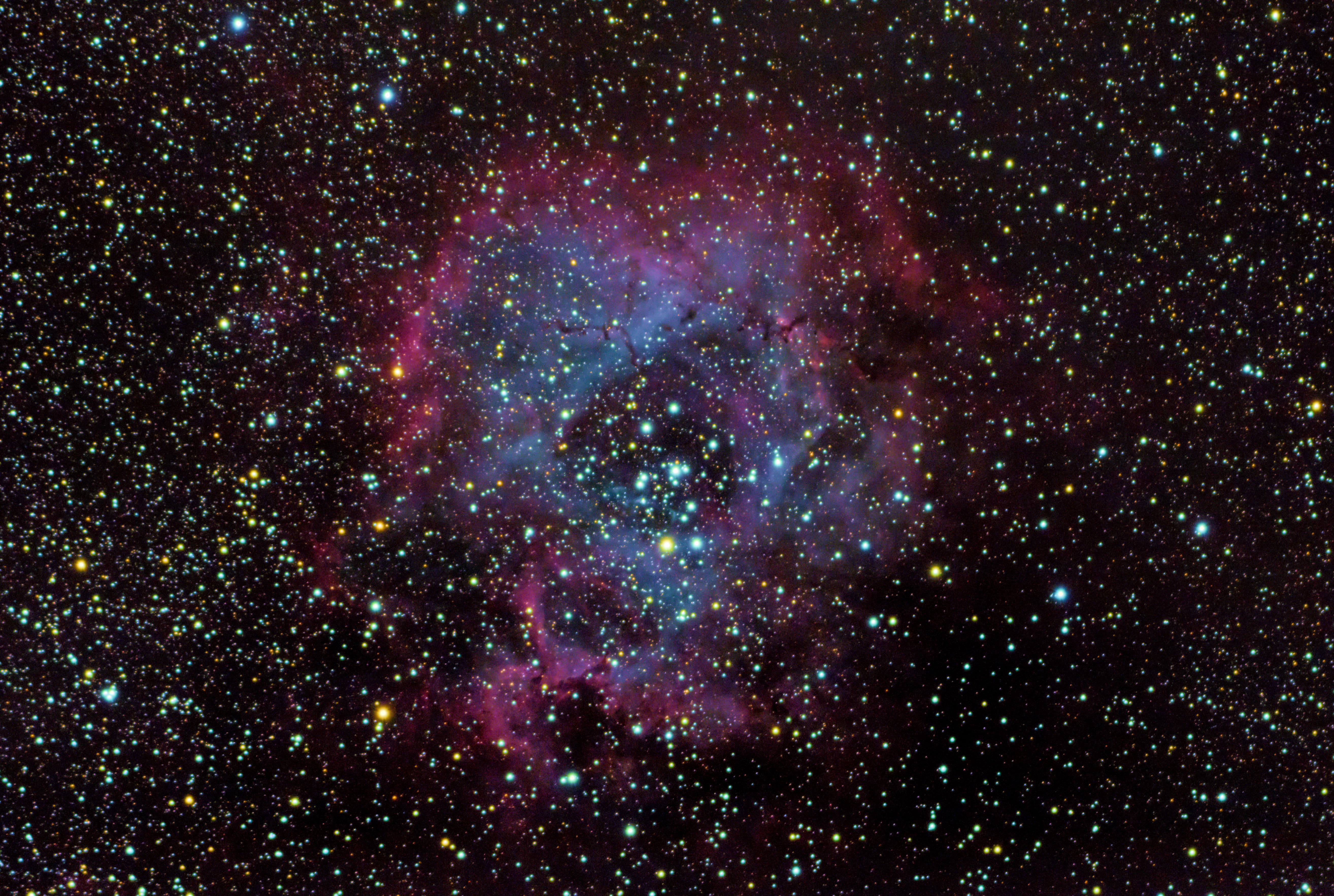
Rosette Nebula
The Rosette Nebula, also known as Caldwell 49 is a large nebula made up of ionized hydrogen gas approximately 130 light years in diameter and located about 5000 light years from Earth.
NASA's Chandra X-Ray Observatory has revealed approximately 2500 young stars in the star forming complex of the Rosette Nebula. The massive O Type stars HD 46223 and HD 46150 are largely responsible for blowing the ionized bubble.
Shot from Mt. Pinos, California November 21th, 2020
Rosette Nebula - Caldwell 49
Telescope - Explore Scientific ED80
Mount - Skywatcher HEQ5 Pro
Camera - Canon Rebel T6i Aperture - f/6
Shutter - 30 seconds
ISO - 3200
90 light frames | 21 dark frames | 134 bias frames | 90 flat frames
45 minutes total integration time
Images calibrated and stacked in AstroPixelProcessor
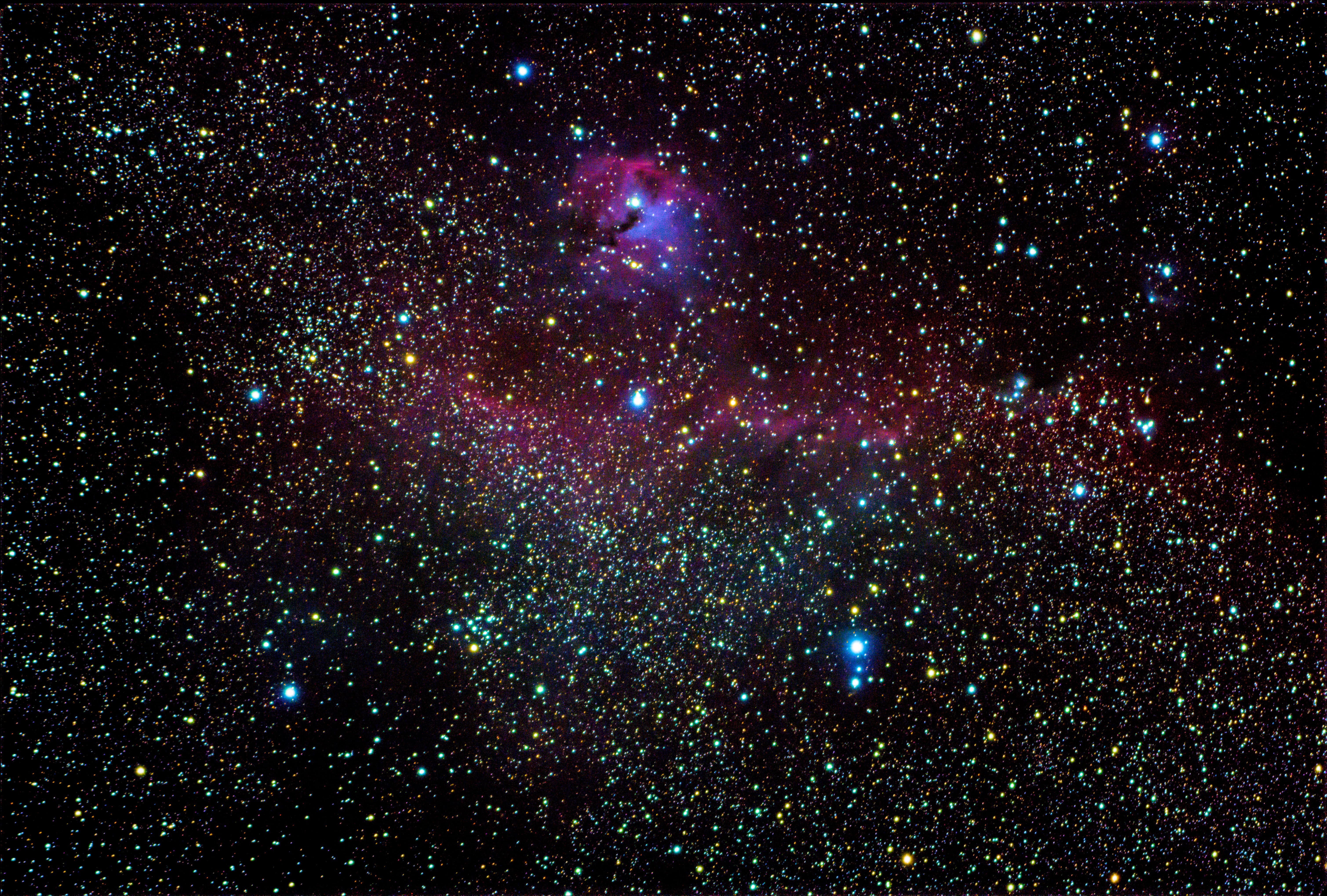
The Seagull Nebula
The Seagull Nebula is a region of nebulosity that lies along the border between the constellations Monoceros and Canis Major. It is a broad expanse of glowing gas and dust. Dominated by the reddish glow of atomic hydrogen, the complex of gas and dust clouds with bright young stars spans over 100 light-years at an estimated 3,800 light-year distance from Earth.
Shot from Mt. Pinos, California
December 18th, 2020
The Seagull Nebula - IC 2177
Telescope - Explore Scientific ED80
Mount - Skywatcher HEQ5 Pro
Camera - Canon Rebel T6i
Aperture - f/6
Shutter - 60 seconds
ISO - 3200
24 light frames
21 dark frames
84 bias frames
24 minutes total integration time
Images calibrated and stacked in AstroPixelProcessor
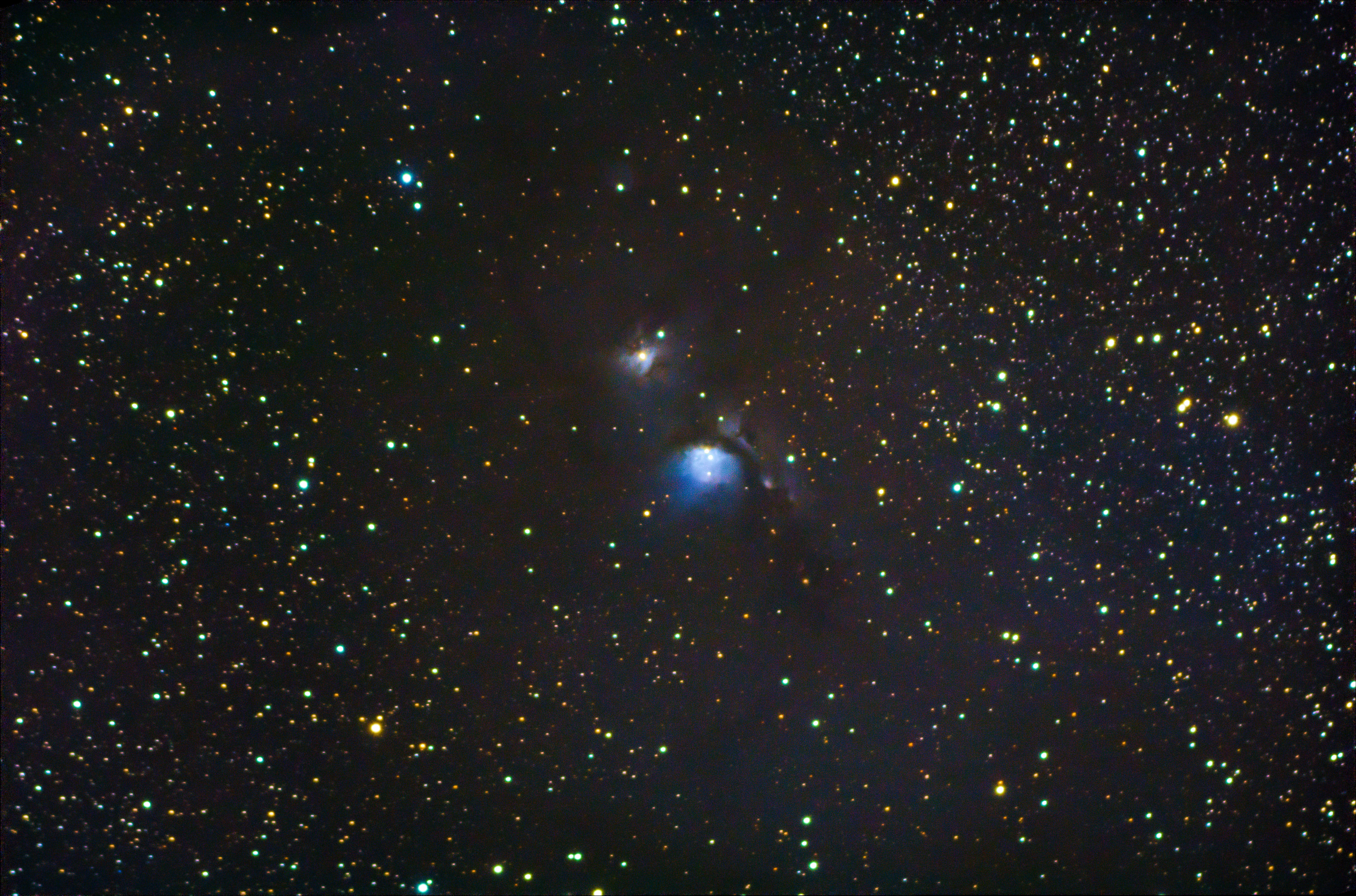
Casper The Friendly Ghost Nebula
Messier 78, affectionately known as Casper The Friendly Ghost Nebula is a diffuse reflection nebula located in the rich constellation Orion. Casper is one of the lesser known areas of nebulosity in the Orion system and if often mistaken as a comet by comet hunters.
The conditions under which I captured the data for this image were absolutely gruelling. My initial observation site ended up being cloudy so I drove an hour and a half further to a higher elevation site - it was clear but also extremely cold at -6 degrees celsius and 35 mph of gusting winds. I decided to try imaging anyway, but the winds made a lot of the light frames unusable and the drop in temperature made my focus drift over time. I am lucky to not have wasted the night of imaging completely and was able to salvage this image.
Shot from Mt Pinos, California January 8th, 2021
Casper The Friendly Ghost Nebula - Messier 78 / NGC 2068
Telescope - Explore Scientific ED80
Mount - Skywatcher HEQ5 Pro
Camera - Canon Rebel T6i
Aperture - f/6
Shutter - 80 seconds
ISO - 6400
26 light frames | 21 dark frames | 103 bias frames
34.66 minutes total integration time
Images calibrated and stacked in AstroPixelProcessor
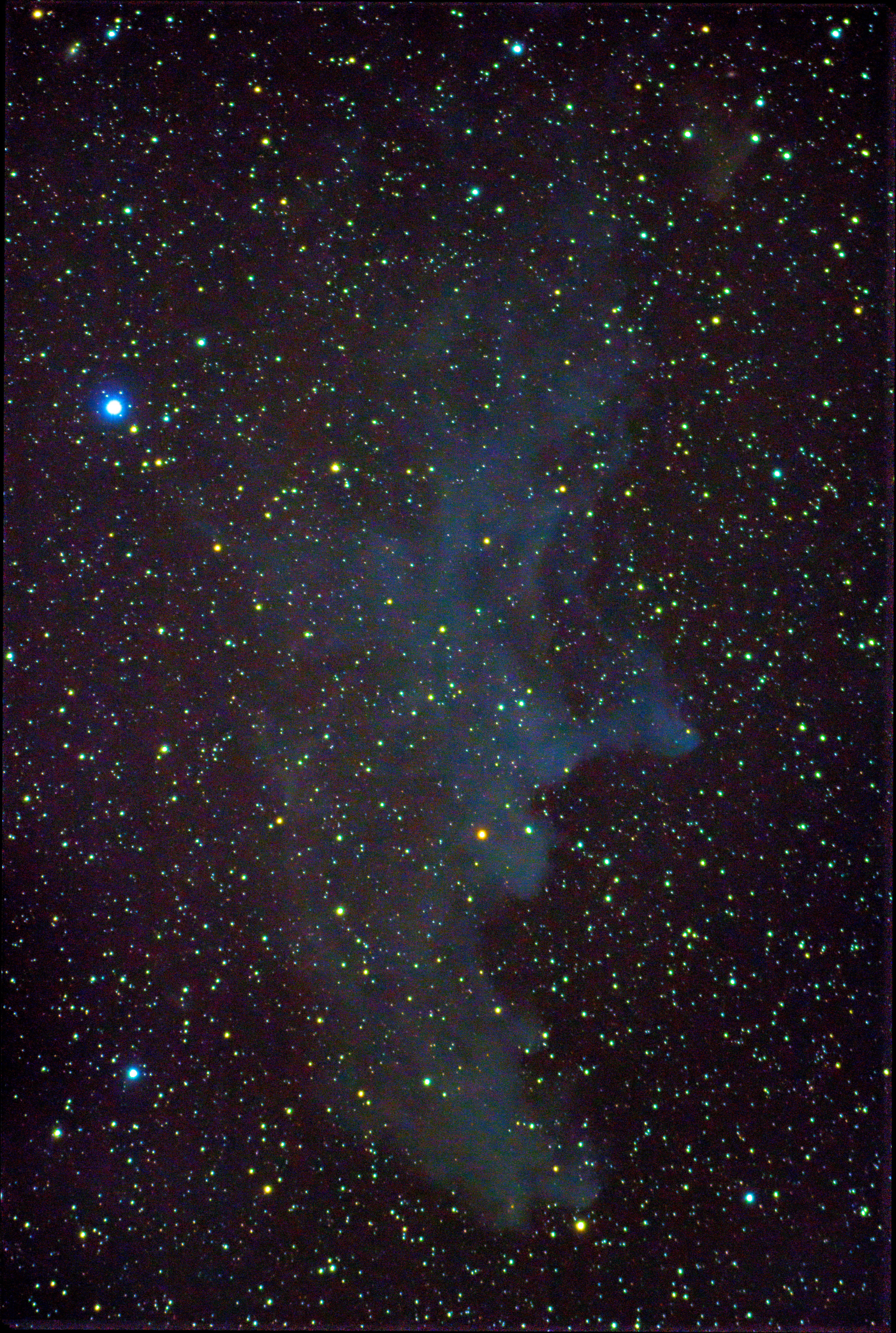
The Witch Head Nebula
The Witch Head Nebula is an extremely faint reflection nebula believed to be an ancient supernova remnant or gas cloud illuminated by nearby supergiant star Rigel in the constellation of Orion. It lies about 900 light-years from Earth.
The nature of the dust particles, reflecting blue light better than red, is a factor in giving the Witch Head its blue color. Radio observations show substantial carbon monoxide emission throughout parts of IC 2118, an indicator of the presence of molecular clouds and star formation in the nebula.
Shot from Mt. Pinos,
California December 18th, 2020
The Witch Head Nebula - IC 2118
Telescope - Explore Scientific ED80
Mount - Skywatcher HEQ5 Pro
Camera - Canon Rebel T6i
Aperture - f/6
Shutter - 60 seconds
ISO - 3200
10 light frames | 21 dark frames | 84 bias frames
10 minutes total integration time
Images calibrated and stacked in AstroPixelProcessor
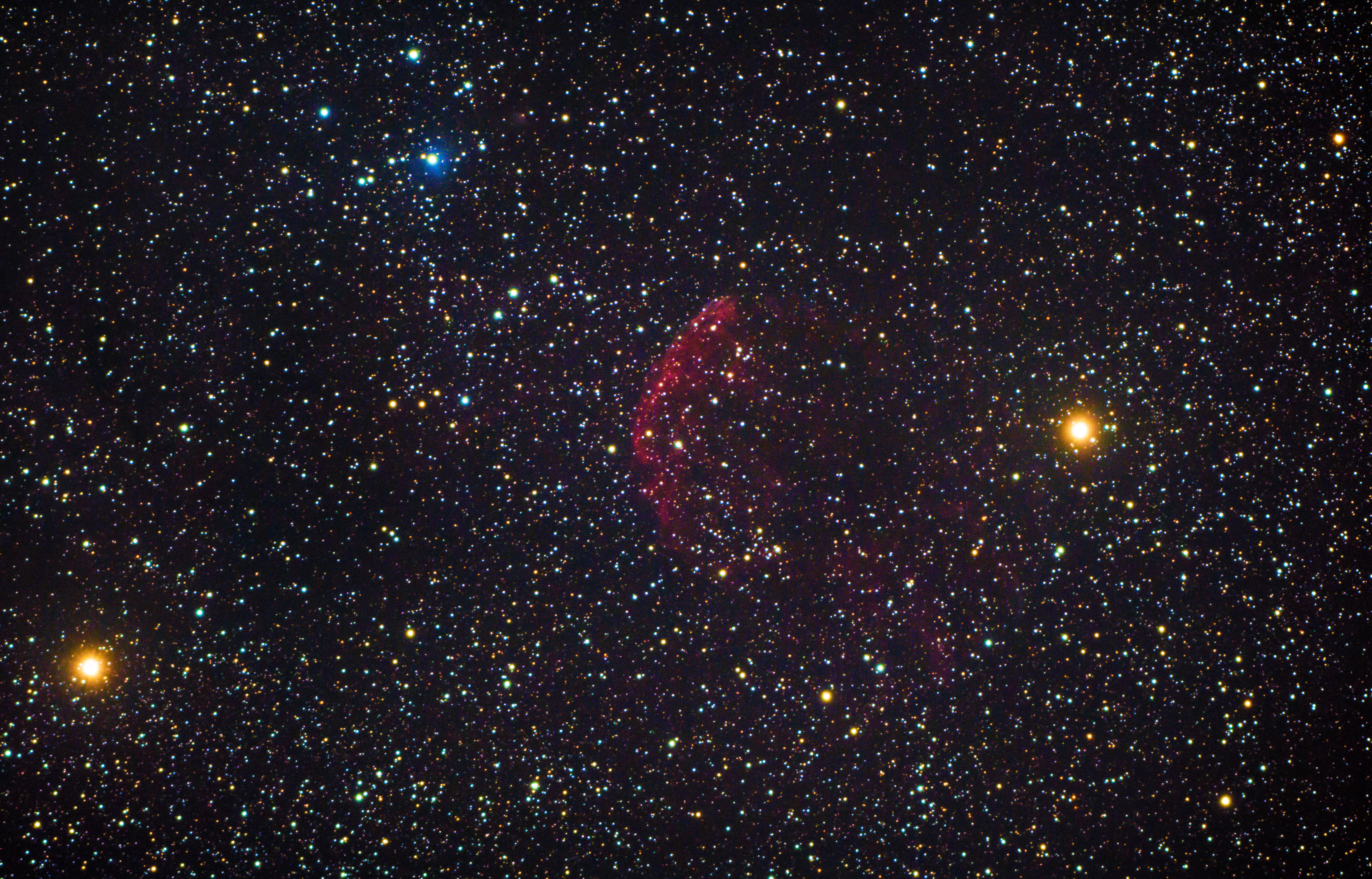
The Jellyfish Nebula
IC 443 - also known as the Jellyfish Nebula - is a galactic supernova remnant in the constellation Gemini. It is located roughly 500 light years from Earth. It is believed IC 443 may be the remains of a supernova that occurred somewhere between 3,000 to 30,000 years ago. The same supernova event likely created the neutron star CXOU J061705.3+222127, which is the collapsed remnant of the stellar core.
The Jellyfish Nebula - IC443
Shot from Templin Highway,
California January 15th, 2021
Telescope - Explore Scientific ED80
Mount - Skywatcher HEQ5 Pro
Camera - Canon Rebel T6i
Aperture - f/6
Shutter - 50 seconds
ISO - 6400
43 light frames | 71 dark frames | 36 minutes total integration time
Images calibrated and stacked in AstroPixelProcessor
Post processed in Adobe Lightroom